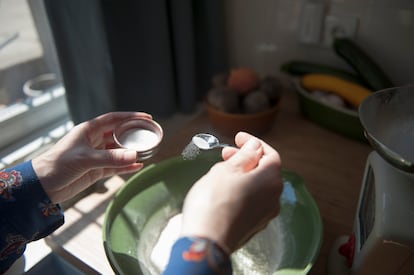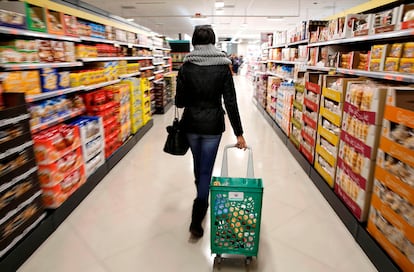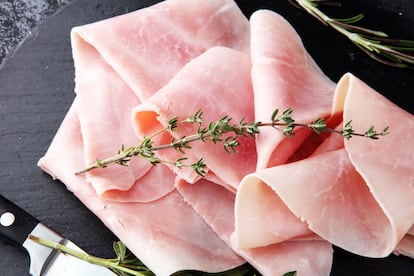The traps that prevent us from reducing our salt intake
Given the many ways it negatively affects our health, it’s important to lower consumption. But how can we do this? Do we know what foods it is in? Or which products may be misleading?

There’s no debate about the negative effects of sodium on our health: it raises blood pressure, which increases the risk of cardiovascular disease, the leading cause of death worldwide. So reducing salt in our diet is one of the ways we can improve our health, so much so that the WHO says it is of the best measures to do this in terms of cost-effectiveness.
But it’s not exactly an easy task: we have to do more than just get rid of the salt shaker. Here is a look at some of the traps we may fall into.
Trap 1: Most salt you consume doesn’t come from the salt shaker
The WHO recommends that we have no more than five grams of salt per day or two of sodium — less than a teaspoon of coffee. But even if you throw out the salt shaker, it’s likely that you exceed this number, because most of our salt intake does not come from the salt we add to our food, but rather from what is contained in food.
Fresh fruits and vegetables, dried legumes, unprocessed nuts, meat and milk — all the raw materials you can think of — contain salt. But as you probably suspect, this is not what you should be worrying about. Their salt content is very low, estimated at between 0.075 and 0.125 grams of salt per 100 grams. Fish and fish products are noticeably saltier, but we are still only talking about 0.375 grams per 100, and it’s not like you spend the day eating sardines.

So where is the salt “hiding”? Well, according to one study, 70-75% of the salt we consume is found in processed foods, be it “just” processed or ultra-processed. In other words, don’t worry about the salt in fresh foods and learn to read the labels of processed foods.
Trap 2: Does it have a lot of salt? It depends on whether it’s solid or liquid
Before we delve into labels, we need a reference for how much salt is too much salt. In countries such as Chile, labels are used to warn consumers if a product has more than one gram of salt per 100 grams for solids and 0.25 milliliters per 100 milliliters for liquids.
Why is this distinction made? Because how we consume salt differs depending on whether it is liquid or solid. For one thing, we do not get as full from drinking liquids. It’s unlikely you will be able to eat a four-tomato salad in one sitting, but you could easily drink a good half-liter bowl of gazpacho, with its four grams of salt. And just like that, you have ingested 80% of the maximum recommended daily salt intake.
Trap 3: Sodium does not come only from salt (but the label tells you this)
Salt contains sodium, which is related to adverse health effects. Salt is the basic way we consume sodium, but it is also found in additives such as sodium glutamate, saccharin sodium and sodium ascorbate. The good news is that this sodium — which is not in the form of salt as such — is also taken into account when it comes to calculating the salt content that appears in a product’s nutrition facts label. So when you are looking at a product, keep in mind Chile’s warning labels: for solids, below one gram of salt per 100 is acceptable, while for liquids, the limit is 0.25 per 100 milliliters. If it is above these values, it will be high in salt.
Trap 4: My “salt reduced” pickles are not low in salt
Stop there! These types of claims are regulated, and I am afraid that this one specifically does not mean exactly what you think. This claim can be made for a product that has 25% less salt compared to similar products. The problem is it’s a relative value. If it is being compared to a product with a crazy high salt content, it is still going to be high in salt, even if it’s reduced. This is the case for “salt reduced” versions of olives and pickles, which still have two grams per 100 — a value similar to that of smoked salmon.

But let’s not confuse “salt reduced” with labels promising “low salt content.” The latter is an absolute value that is not based on a comparison, but rather the total amount of salt. In this case, a product will have a maximum of 0.3 grams of salt per 100 grams or milliliters. Even less salt, a ceiling of 0.1, is for products with “very low salt content” and those with just 0.0125 can claim to be “salt-free.”
What if you come across a product that says it has “no added salt”? Good news: it will have a maximum of 0.3 grams per 100 grams of salt, with the extra requirement that the salt is naturally occurring in the food. But the easiest way to decipher all these claims is to check the nutrition facts label.
Trap 5: “A touch of salt” is much more than a pinch
Long live the marketing department and its linguistic acrobatics. When they say a product has a “touch” of salt, they are trying to make us think that it has just a smidgen, a tiny bit to give it the extra flavor it needs. Terms such as a “touch of salt” or a “pinch of salt” are often used in snack foods, which we know are salty, or very salty. It’s a wolf in sheep’s clothing: it draws your attention to the salt’s content only to suggest that, unlike other products, it has just the right amount.

Since “a touch” is not a regulated measurement, but rather an advertising rouse, the product could well have buckets of salt. And that is usually what happens. In the best of cases, it has more or less the same salt content as any other snack (1 to 1.5 grams of salt per 100 grams). But in other cases, it can be worse. In popcorn, for example, that “pinch” of salt is actually 4 grams of salt per 100 grams.
Sign up for our weekly newsletter to get more English-language news coverage from EL PAÍS USA Edition
Tu suscripción se está usando en otro dispositivo
¿Quieres añadir otro usuario a tu suscripción?
Si continúas leyendo en este dispositivo, no se podrá leer en el otro.
FlechaTu suscripción se está usando en otro dispositivo y solo puedes acceder a EL PAÍS desde un dispositivo a la vez.
Si quieres compartir tu cuenta, cambia tu suscripción a la modalidad Premium, así podrás añadir otro usuario. Cada uno accederá con su propia cuenta de email, lo que os permitirá personalizar vuestra experiencia en EL PAÍS.
¿Tienes una suscripción de empresa? Accede aquí para contratar más cuentas.
En el caso de no saber quién está usando tu cuenta, te recomendamos cambiar tu contraseña aquí.
Si decides continuar compartiendo tu cuenta, este mensaje se mostrará en tu dispositivo y en el de la otra persona que está usando tu cuenta de forma indefinida, afectando a tu experiencia de lectura. Puedes consultar aquí los términos y condiciones de la suscripción digital.
More information
Últimas noticias
More than 40 Democratic lawmakers urge Trump in a letter to stop his ‘attempts to undermine democracy in Brazil’
The journal ‘Science’ criticizes Trump’s anti-renewable energy policy: ‘The US is failing to benefit from its own innovations’
Cubans hope for a miracle as dengue and chikungunya spread
The long shadow of the father figure in the films of Rob Reiner
Most viewed
- Christian Louboutin: ‘Young people don’t want to be like their parents. And if their parents wear sneakers, they’re going to look for something else’
- Cartels in Mexico take a leap forward with narco-drones: ‘It is criminal groups that are leading the innovation race’
- ‘El Limones’ and the growing union disguise of Mexican organized crime
- Liset Menéndez de la Prida, neuroscientist: ‘It’s not normal to constantly seek pleasure; it’s important to be bored, to be calm’
- The low-cost creative revolution: How technology is making art accessible to everyone











































